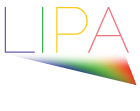Introduction
Laser Illuminated Projectors (LIPs) provide both image quality and economic benefits to a wide range of applications. New laser packaging technology and more sophisticated thermal management subsystems continue to improve the energy efficiency of LIPs for both cinema and non-cinema applications.
Part of LIPA’s mission is to establish best practices and to educate our members, purchasers and users of LIPs. With the widespread and growing adoption of Laser illumination, our industry needs a consensus “Figure of Merit” (FoM) by which LIPs can be directly and accurately compared, “in use”. The goal of this blog post is to propose a well-defined FoM that can provide the basis for comparing, tracking and continuously improving the efficiencies of this increasingly dominant, solid-state illumination (SSI) technology. Furthermore, it will touch on strategies to further increase base efficiencies and extend operating lifetimes.
LIP Overall Energy Efficiency
The Energy Efficiency of a LIP is simply the projector’s output in lumens divided by its wall-plug electrical power consumption. The metric is “lumens per wall-plug watt” or lm/WElectrical. This is the most comprehensive and straightforward definition, as it is the measure of what the user “gets” for the quantifiable power utilized (and billed) – at the wall-plug (Mains) source.
This metric should be included on LIP data-sheets, so the customer does not have to calculate it. It quantifies the efficiency of the projector per se, and allows the user to compare different models and to calculate the hourly power cost to operate the LIP for a given electricity price in $/kW-hr.
Simple yes, but…
This Figure of Merit becomes reliably comparable, when several consensus conditions are met and included in the definition of the proposed metric.
- The wall plug POWER in watts must include all requisite laser, optics, electronics and cooling, whether on-board (inside the projector) or off-board, in a chiller or radiator.
- The wall plug POWER in watts includes all the power needed for electronics, processing, fans, content interfaces and storage etc., not just the laser light source.
- The wall plug power is that which is required to deliver the specified lumens, with the appropriate definition. Examples: Maximum lumen output; Typical lumen output, Maximum lumen output at calibrated white-point; efficiency at output and power level leading to maximum lifetime.
We see that for any given Projector, one may arrive at different efficiencies levels using the standard FoM [lm/W]. All efficiency values can be valid, comparable and useful if they are clearly defined.
To illustrate how the FoM can be used to compare LIPs in several different modes we can take a hypothetical LIP that delivers a maximum of 20,000 lumens and consumes 2,000W (2.0kW) of wall-plug power to do it. FoM = 10 lm/W. When the projector is calibrated for its intended White-point/color space, the output may drop to 18,500lm FoM = 9.25 lm/W. If the projector is set for maximum operating life, it may produce 15,000 lumens at 1.8kW power consumption FoM = 8.33 lm/W. The figure of merit is the same, but the value is different when measured and calculated under different operating conditions.
Finally, in comparing operating efficiencies of LIPs, one must also consider the power consumption of any HVAC cooling when the projector’s exhaust heat is “externalized” to the venue operating environment. For example, the heat dissipation in watts of an operating projector if merely the difference between the wall-plug watt input and the optical power output in watts (not lumens) out of the lens. The design of the projector may seek to maintain a constant Laser (and optics) temperature via the use of a chiller or by air-cooling the whole projector to “the ambient environment”. In either case, “the environment” still has to dissipate the heat.
In cases where the heat load is large, this cost must be borne either way, but it is NOT included in the Projector efficiency FoM. Technically, this is true of all LIPs, but for most lower lumen LIPs, the additional HVAC power consumption is de minimis, so can be left out of the calculation.
In conclusion, the simplest efficiency metric, lm/Wwallplug can be used and compared, as long as its measured wall power consumption corresponds to the stated operating condition (maximum, typical, calibrated, average). In some special cases – ultra-high lumen output and/or ultra-long operating lifetimes, external heat dissipation costs should also be considered in selecting the right projector and operating conditions for the most efficient combination of output level, lifetime and power consumption.
Future LIPA posts and articles will discuss the range efficiency levels and how they are measured and achieved.

